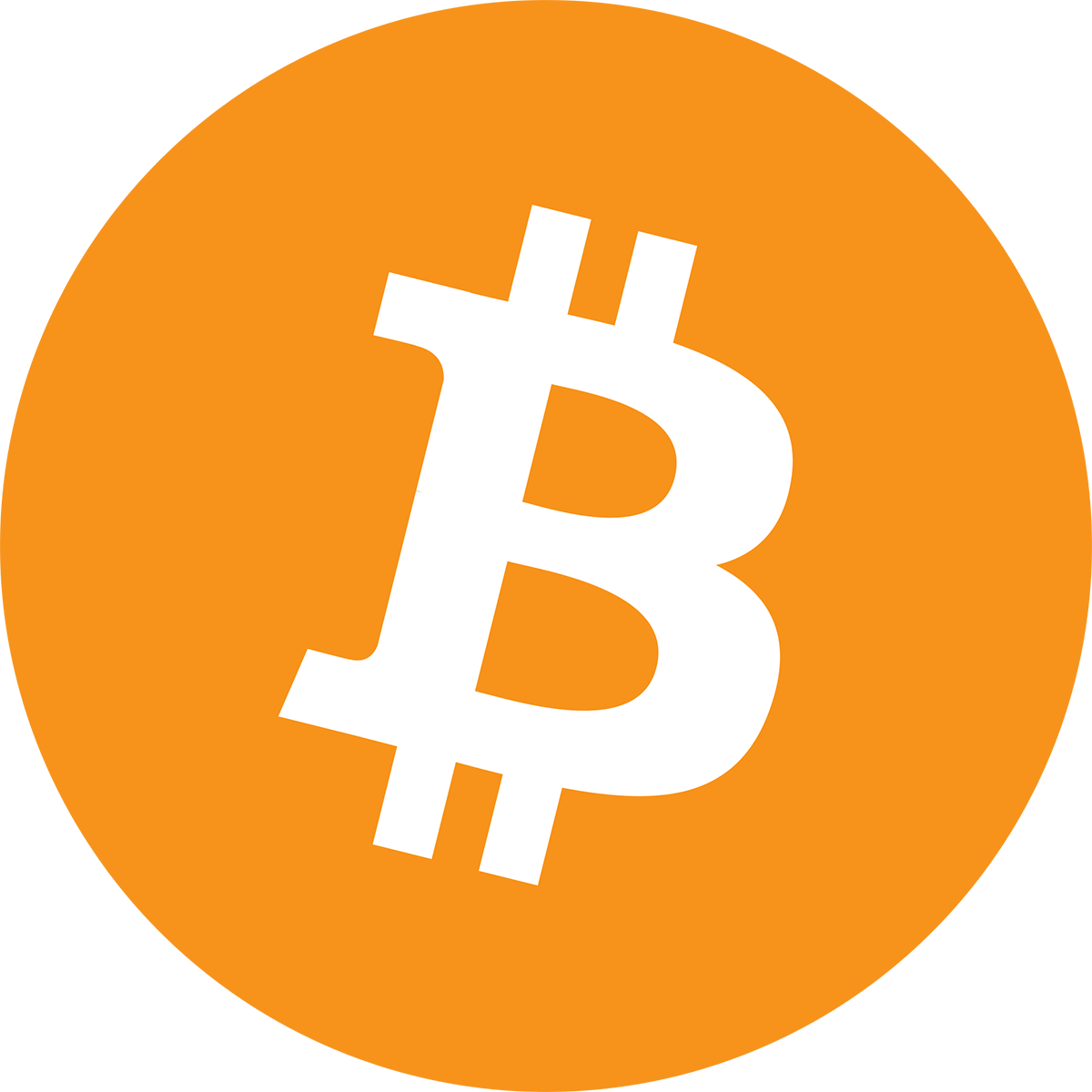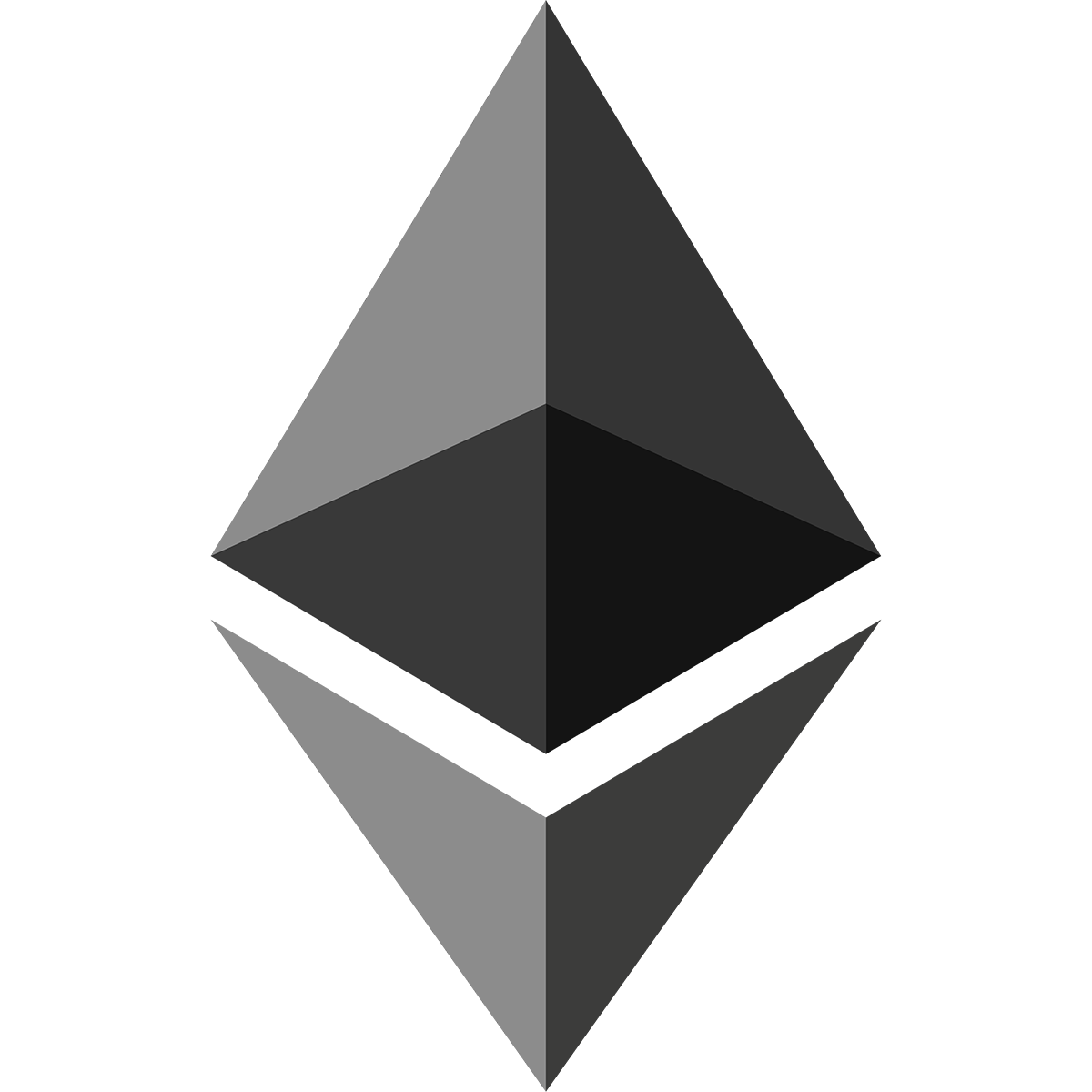As 2025 approaches, investors are looking for opportunities in the ever-evolving cryptocurrency market. Choosing the right coins requires a blend of research, awareness of market trends, and a grasp of the unique value each cryptocurrency offers.
Factors to Consider Before Investing in 2025
Before diving into specific cryptocurrencies, ensure you evaluate the following:
- Market Utility: Does the project solve real-world problems?
- Adoption Rate: How widely is the cryptocurrency used?
- Developer Activity: Is the project consistently updated?
- Tokenomics: Are the supply dynamics favorable for price appreciation?
These factors can help filter out less promising options.
Promising Cryptocurrencies for 2025
| Cryptocurrency | Market Cap (2024) | Key Features | Max Supply | Launch Year | Key Users/Partners | Supported Platforms | |
|---|---|---|---|---|---|---|---|
 | Bitcoin (BTC) | $600B | Limited supply, first-mover advantage | 21 million | 2009 | Tesla, MicroStrategy | Binance, Coinbase, Kraken |
 | Ethereum (ETH) | $300B | Smart contracts, large ecosystem | No limit | 2015 | OpenSea, Uniswap | Binance, Coinbase, MetaMask |
 | Solana (SOL) | $50B | High-speed transactions, low fees | 508 million | 2020 | Phantom Wallet, Serum | Binance, Kraken, FTX (pre-bankruptcy) |
 | Cardano (ADA) | $15B | Research-driven approach | 45 billion | 2017 | Governments, World Mobile | Binance, Coinbase, Yoroi Wallet |
 | Chainlink (LINK) | $10B | Decentralized oracle network | 1 billion | 2017 | Google Cloud, SWIFT | Binance, Coinbase, Kraken |
 | Polkadot (DOT) | $7B | Cross-chain interoperability | No limit | 2020 | Moonbeam, Acala | Binance, Kraken, Ledger Wallet |
 | Binance Coin (BNB) | $40B | Utility token, robust ecosystem | 200 million | 2017 | Binance Smart Chain Ecosystem | Binance, Trust Wallet |
 | XRP (XRP) | $20B | Fast cross-border payments | 100 billion | 2012 | RippleNet (Bank of America, Santander) | Binance, Coinbase, Kraken |
 | Avalanche (AVAX) | $6B | Subnets, high scalability | 720 million | 2020 | Deloitte, Chainlink | Binance, Coinbase, Avalanche Wallet |
 | Polygon (MATIC) | $10B | Layer-2 scaling solution | 10 billion | 2017 | Aave, Decentraland | Binance, Coinbase, MetaMask |
How to Start Investing in Crypto in 2025
- Choose a Reliable Exchange
Select platforms such as Binance, Coinbase, Kraken, or Exness for secure trading. - Set Up a Wallet
Opt for either a hot wallet (e.g., MetaMask) for convenience or a cold wallet (e.g., Ledger) for maximum security. - Research the AssetAnalyze the project’s whitepaper, team, and community engagement.
- Start SmallTest the waters with a manageable amount before committing more capital.
Comparison of Transaction Costs and Speeds
| Cryptocurrency | Average Fee (USD) | Transaction Speed | Consensus Mechanism | Scalability (TPS) |
|---|---|---|---|---|
| Bitcoin (BTC) | 2.00 – 5.00 | 10 minutes per block | Proof of Work (PoW) | ~7 |
| Ethereum (ETH) | 0.50 – 4.00 | ~14 seconds per block | Proof of Stake (PoS) | ~30 |
| Solana (SOL) | ~0.00025 | ~400 milliseconds | Proof of History (PoH) + PoS | ~65,000 |
| Cardano (ADA) | ~0.20 | ~20 seconds | Ouroboros PoS | ~250 |
| Chainlink (LINK) | ~0.10 | ~30 seconds | Hybrid PoW/PoS | ~10 |
| Polkadot (DOT) | ~0.10 | ~6 seconds | Nominated PoS | ~1000 |
| Binance Coin (BNB) | ~0.10 | ~1 second | Delegated PoS (DPoS) | ~2000 |
| XRP (XRP) | ~0.0002 | ~3-5 seconds | Ripple Protocol (N/A) | ~1500 |
| Avalanche (AVAX) | ~0.03 | ~2 seconds | Avalanche Consensus | ~4500 |
| Polygon (MATIC) | ~0.01 | ~2 seconds | Proof of Stake (PoS) | ~65,000 |
Low fees and high transaction speeds could influence your choice depending on your use case.
Risk Management Tips
- Diversify Your Portfolio: Avoid putting all your capital into one coin.
- Stay Updated: Follow news and updates about regulatory changes.
- Set Stop-Loss Orders: Protect yourself from significant downturns.
- Invest What You Can Afford to Lose: Cryptocurrencies are inherently volatile.
Emerging Trends Shaping the Crypto Market in 2025
Cryptocurrency markets are influenced by several external factors. Understanding these trends can help predict which coins will perform well:
- RegulationGovernments worldwide are adopting clearer policies for cryptocurrencies. Coins compliant with regulatory requirements are likely to thrive.
- Decentralized Finance (DeFi)Platforms providing financial services without intermediaries are expected to grow. Coins like Ethereum, Avalanche, and Solana play a central role here.
- Web3 IntegrationCryptos powering Web3 applications (e.g., Polkadot and Chainlink) will likely gain popularity.
- Institutional InvestmentLarge-scale investments from traditional financial institutions continue to legitimize the market.
Utility vs. Speculation: A Closer Look
Cryptocurrencies can be grouped by their purpose and risk level. Some are used for practical functions like powering decentralized platforms, while others gain value through speculation or as a store of value.
| Category | Example Coins | Purpose | Risk Level |
|---|---|---|---|
| Utility Cryptocurrencies | Ethereum, Cardano | Used in smart contracts or platforms. | Moderate |
| Store of Value | Bitcoin | Digital gold, inflation hedge. | Low |
| DeFi Tokens | AAVE, Uniswap | Fuel decentralized financial services. | High |
| Meme Coins | Dogecoin, Shiba Inu | Driven by community hype. | Very High |
Focusing on utility-driven coins often provides more stable long-term growth compared to speculative assets. However, investors should consider the risk-reward ratio of each category before diversifying their portfolio.
How to Stay Ahead in the Crypto Market
To make informed decisions, it’s essential to stay updated and analyze trends. Here’s how:
- Follow Market Data: Use platforms like CoinMarketCap or Glassnode for metrics like trading volume and circulating supply.
- Engage in Communities: Forums like Reddit, Discord, and Twitter often reveal market sentiment.
- Study Partnerships: Collaborations with major companies can signal growth potential.
- Monitor Technical Indicators: Tools like RSI (Relative Strength Index) or moving averages help in timing buys or sells.
A Deeper Dive Into Notable Coins
The cryptocurrency market is large, with coins specializing in areas like decentralized finance (DeFi), fast transactions, and blockchain connectivity. Each coin has its own strengths, challenges, and uses. Knowing these details, along with market cap and key features, helps investors make better decisions. Below is a comparison of notable cryptocurrencies.
| Coin | Strengths | Challenges | Market Cap (2024) |
|---|---|---|---|
| Bitcoin (BTC) | Widespread adoption, limited supply (21 million cap). | High transaction fees, slow speeds for everyday use. | $600 billion |
| Ethereum (ETH) | Massive developer base, dominance in DeFi and NFTs. | Scalability concerns despite Ethereum 2.0 upgrades. | $300 billion |
| Solana (SOL) | Low fees, blazing transaction speeds. | Network outages have raised reliability questions. | $50 billion |
| Cardano (ADA) | Peer-reviewed development, eco-friendly blockchain. | Slow rollout of new features compared to competitors. | $15 billion |
| Chainlink (LINK) | Leading oracle network, essential for smart contract data. | Dependence on Ethereum, competition in oracle solutions. | $10 billion |
| Polkadot (DOT) | Cross-chain interoperability, strong governance model. | Complex architecture, slow ecosystem growth. | $7 billion |
| Binance Coin (BNB) | Integrated into Binance ecosystem, reduced trading fees. | Centralization concerns, regulatory scrutiny. | $40 billion |
| XRP (XRP) | Fast transactions, low fees, focus on cross-border payments. | Legal challenges with the SEC, limited decentralization. | $20 billion |
| Avalanche (AVAX) | High scalability, fast finality (under 2 seconds). | Competition with similar platforms like Solana and Ethereum. | $6 billion |
| Polygon (MATIC) | Layer-2 scaling solution for Ethereum, low fees, high speed. | Dependence on Ethereum, growing competition in Layer-2. | $10 billion |
Security Measures for Crypto Investors
Given the rise in hacks and scams, ensuring the safety of your investments is critical:
- Enable 2FA (Two-Factor Authentication)Protect your exchange account from unauthorized access.
- Use Hardware WalletsCold storage wallets like Trezor or Ledger keep your funds offline.
- Be Cautious of PhishingAvoid clicking suspicious links or sharing private keys.
- Verify Contract AddressesDouble-check addresses before sending funds, especially in DeFi.
Forecasting Potential ROI in 2025
As we look ahead to 2025, many cryptocurrencies are expected to grow. Factors like technology improvements, market trends, and adoption will impact their potential return on investment (ROI). Below is a comparison of current prices, projected prices, and expected ROI for popular cryptocurrencies in 2025 to help investors assess growth opportunities.
| Coin | Current Price (December 2024) | Projected Price (2025) | Expected ROI |
|---|---|---|---|
| Bitcoin (BTC) | $98,000 | $120,000 – $160,000 | ~22-63% |
| Ethereum (ETH) | $3,892 | $5,000 – $7,000 | ~28-80% |
| Solana (SOL) | $229 | $600 – $1,000 | ~162-337% |
| Cardano (ADA) | $1.14 | $3.00 – $5.00 | ~163-338% |
| Chainlink (LINK) | $25.17 | $60 – $90 | ~138-257% |
| Polkadot (DOT) | $9.66 | $20 – $35 | ~107-263% |
| Binance Coin (BNB) | $729 | $1,000 – $1,500 | ~37-105% |
| XRP (XRP) | $2.43 | $5 – $8 | ~106-229% |
| Avalanche (AVAX) | $50.40 | $100 – $150 | ~98-197% |
| Polygon (MATIC) | $0.65 | $2 – $3 | ~208-361% |
These projections are based on current trends but should not replace your independent research.
Future-Proof Crypto Sectors in 2025
As blockchain technology continues to evolve, several sectors within the cryptocurrency space are expected to see significant growth. Understanding which sectors within the crypto space are expected to grow can help you pinpoint promising projects. Here’s an overview of key sectors poised for expansion:
| Sector | Example Projects | Growth Drivers | Market Potential | Key Challenges | Key Use Cases |
|---|---|---|---|---|---|
| Decentralized Finance (DeFi) | Uniswap, AAVE, MakerDAO | Increased demand for decentralized lending, borrowing, and trading. | $250 billion (2025 projection) | Regulatory challenges, smart contract risks. | Peer-to-peer lending, decentralized exchanges, liquidity pools. |
| Gaming & Metaverse | Axie Infinity, Decentraland, The Sandbox | Rapid adoption of virtual worlds and in-game assets, rise of NFTs. | $200 billion (2025 projection) | High energy consumption, scalability. | Virtual assets, NFTs, gaming economies, metaverse. |
| Interoperability | Polkadot, Cosmos, Avalanche | Need for seamless blockchain communication and cross-chain compatibility. | $50 billion (2025 projection) | Technical complexity, network security. | Cross-chain transactions, data sharing, DeFi integration. |
| Decentralized Oracles | Chainlink, Band Protocol | Growing demand for real-world data integration in smart contracts. | $20 billion (2025 projection) | Data privacy, network centralization. | Real-world data feeds for smart contracts, DeFi, insurance. |
| Layer 2 Solutions | Polygon, Arbitrum, Optimism | Addressing scalability issues on major blockchains like Ethereum. | $60 billion (2025 projection) | Network congestion, adoption barriers. | Transaction speed improvements, reduced gas fees, scalability. |
These sectors reflect broader trends in how blockchain technology is being used beyond simple currency applications. They are expected to drive much of the growth in the crypto space by 2025, with increasing demand for decentralized finance, gaming, cross-chain interoperability, and more.
Strategies for Maximizing Returns in 2025
Here are specific approaches to make the most of your investments in the coming year:
Dollar-Cost Averaging (DCA)
- Invest small amounts consistently over time.
- Reduces the risk of buying at peak prices.
Staking and Yield Farming
- Earn passive income by locking coins in DeFi protocols or staking platforms.
- Research platforms to ensure security and attractive returns.
Portfolio Diversification
- Allocate investments across different crypto sectors.
- Example Portfolio:
- 50% in major coins (BTC, ETH).
- 30% in mid-cap altcoins (SOL, DOT, ADA).
- 20% in high-risk, high-reward projects.
Market Volatility: Risk vs. Reward
Cryptocurrencies are known for their volatility. Understanding potential price swings is essential for building confidence in your investments.
| Coin | Historical Volatility (Last 12 Months) | Why It Matters | Launch Year | Key Users/Partners |
|---|---|---|---|---|
| Bitcoin (BTC) | Medium | Often seen as a stable option compared to altcoins. | 2009 | Tesla, MicroStrategy |
| Ethereum (ETH) | Medium-High | Moves significantly with market trends and DeFi growth. | 2015 | OpenSea, Uniswap, ConsenSys |
| Solana (SOL) | High | Fast-growing ecosystem but susceptible to sharp drops. | 2020 | Serum, Phantom Wallet |
| Dogecoin (DOGE) | Very High | Heavily influenced by social media and community hype. | 2013 | Elon Musk, Reddit |
| Cardano (ADA) | Medium | Stable in its growth but has large price fluctuations. | 2017 | World Mobile, Governments |
| Chainlink (LINK) | Medium-High | Volatile with the growth of DeFi and oracle adoption. | 2017 | Google Cloud, SWIFT |
| Polkadot (DOT) | High | Prone to price swings based on cross-chain adoption. | 2020 | Moonbeam, Acala |
| Binance Coin (BNB) | Medium | Affected by the performance of the Binance exchange. | 2017 | Binance Ecosystem |
| XRP (XRP) | High | Subject to price fluctuations due to ongoing legal battles. | 2012 | RippleNet (Bank of America, Santander) |
| Avalanche (AVAX) | High | Strong growth but highly sensitive to market shifts. | 2020 | Deloitte, Chainlink |
High volatility can be an opportunity for short-term gains but demands a disciplined strategy. Coins like Bitcoin and Ethereum are relatively less volatile and may be better suited for long-term investment strategies, while coins like Dogecoin and Solana are much more volatile and can experience larger price swings in a shorter time frame.
Tracking Key Indicators for 2025
To spot the best opportunities, keep an eye on these indicators:
- Market Cap: Represents the total value of a cryptocurrency.
A higher market cap indicates stability and widespread adoption.
- Trading Volume: Measures the daily exchange activity.
High volume suggests strong market interest and liquidity.
- Development Activity: Tracks updates on platforms like GitHub and project innovations.
Active development ensures adaptability to market needs.
- Whale Activity: Observes significant transactions or holdings by large investors.
Whale movements can signal potential price shifts.
Regularly analyzing these indicators helps you stay ahead of market movements.
Regulatory Developments: What to Expect in 2025
Governments and international organizations are shaping the cryptocurrency landscape. Here are some potential regulatory changes and their impacts:
| Region | Expected Regulation | Potential Impact on Market | Key Cryptos Affected |
|---|---|---|---|
| United States | Clarity on stablecoins and DeFi platforms. | Increased institutional adoption, compliance pressure. | Bitcoin, Ethereum, Solana |
| European Union | Rollout of MiCA (Markets in Crypto-Assets). | Standardized rules for crypto assets across member states. | Bitcoin, Cardano, Polkadot |
| Asia | Stricter regulations in China, growth in Japan. | More centralized blockchain projects, regional hubs for innovation. | XRP, Solana, Binance Coin |
| United Kingdom | Potential framework for crypto taxation and licensing. | Clearer tax implications, more robust frameworks for crypto companies. | Ethereum, Polkadot, Cardano |
| Latin America | Increased regulations in Brazil and Argentina. | More clarity on crypto trading, adoption in developing markets. | Bitcoin, Chainlink, Cardano |
| Middle East | Regulatory clarity and crypto-friendly zones in Dubai. | Dubai expected to become a regional crypto hub, attracting global talent. | Ethereum, Polkadot, Binance Coin |
Understanding regulatory landscapes can help identify coins better positioned to survive legal scrutiny.
Top Exchanges for Trading in 2025
Choosing the right platform is as important as selecting the cryptocurrency itself.
| Exchange | Trading Fees | Supported Coins | 24h Trading Volume | Launch Year | Notable Features |
|---|---|---|---|---|---|
| Binance | 0.1% (Spot Trading), 0.5% (Futures) | 600+ | $40B+ | 2017 | High liquidity, wide selection, staking options, margin trading, futures, and derivatives. |
| Coinbase | 1.49% (Buy/Sell), 0.50% (USD Coin Transfers) | 150+ | $5B+ | 2012 | User-friendly interface, educational resources, insurance-backed security. |
| Kraken | 0.16%-0.26% (Spot), 0.5% (Margin Trading) | 200+ | $1B+ | 2011 | Advanced tools for experienced traders, margin trading, futures, staking, high security. |
| Exness | 0.0% – 0.2% | 100+ | $3B+ | 2008 | Low fees, global market reach, large selection of fiat-to-crypto pairs, 24/7 support. |
| eToro | 0.75% (Buy/Sell) | 50+ | $300M+ | 2007 | Social trading, copy trading, beginner-friendly, integrates with traditional financial assets. |
| Bybit | 0.1% (Spot Trading), 0.05% (Maker Fee) | 300+ | $4B+ | 2018 | Derivatives, futures trading, leverage up to 100x, strong security, mobile app. |
| Bitfinex | 0.1% (Spot Trading), 0.2% (Margin Trading) | 300+ | $2B+ | 2012 | High liquidity, advanced trading tools, margin trading, lending options. |
Selecting a platform with low fees and high reliability can significantly improve your trading outcomes.
What to Avoid in 2025
While crypto offers immense opportunities, there are risks you should steer clear of:
Low Liquidity Projects
Coins with low trading volumes can be manipulated easily and are harder to sell during market downturns. Always check the 24-hour trading volume before investing.
Overhyped Meme Coins
While some meme coins like Dogecoin may have staying power, many are created as pump-and-dump schemes. Ensure the project has real utility or a strong community before investing.
Unverified Platforms
Be cautious of platforms promising unrealistic returns or new exchanges with limited track records. Stick to regulated or widely trusted exchanges.
Crypto Staking and Passive Income Opportunities
One way to grow your portfolio is by staking cryptocurrencies. The rewards are typically a percentage of the staked amount and depend on the blockchain’s staking system. Here’s a comparison of some top staking opportunities in 2025:
| Cryptocurrency | Staking APY | Lock-Up Period | Minimum Stake | Staking Method | Annual Staking Rewards |
|---|---|---|---|---|---|
| Bitcoin (BTC) | 0% (No staking) | N/A | N/A | Proof of Work (PoW) | N/A |
| Ethereum (ETH) | 4-6% | 6-12 months | 32 ETH | Proof of Stake (PoS) | ~$1,500 for 32 ETH (at $1,000 per ETH) |
| Solana (SOL) | ~7% | No fixed period | 0.01 SOL | Proof of Stake (PoS) | ~$35 for 0.5 SOL (at $50 per SOL) |
| Cardano (ADA) | ~5% | Flexible | No minimum | Ouroboros PoS | ~$25 for 500 ADA (at $1 per ADA) |
| Chainlink (LINK) | ~4% | No fixed period | 1 LINK | Proof of Stake (PoS) | ~$4 for 100 LINK (at $4 per LINK) |
| Polkadot (DOT) | ~14% | 28 days | 1 DOT | Nominated Proof of Stake (NPoS) | ~$1.40 for 1 DOT (at $10 per DOT) |
| Binance Coin (BNB) | ~6% | Flexible | 0.1 BNB | Binance Smart Chain PoS | ~$60 for 100 BNB (at $60 per BNB) |
| XRP (XRP) | 0% (No staking) | N/A | N/A | XRP Ledger | N/A |
| Avalanche (AVAX) | ~10% | 10-14 days | 25 AVAX | Avalanche Consensus Protocol | ~$250 for 25 AVAX (at $10 per AVAX) |
| Polygon (MATIC) | ~6% | Flexible | 1 MATIC | Proof of Stake (PoS) | ~$6 for 100 MATIC (at $1 per MATIC) |
Staking provides a relatively low-risk way to earn additional crypto, especially for long-term holders. Bitcoin and XRP do not offer staking rewards, as they use Proof of Work and XRP Ledger, respectively. Meanwhile, Ethereum, Polkadot, and Avalanche offer some of the highest staking rewards in the market.
Common Mistakes to Avoid
Chasing FOMO (Fear of Missing Out)
- Many investors buy during hype cycles and end up with losses when prices correct. Avoid chasing coins solely because of short-term spikes.
Neglecting Security
- Use strong passwords, enable 2FA, and always double-check wallet addresses before transferring funds.
Overleveraging
- Using borrowed funds to trade can amplify losses in volatile markets. Stick to spot trading unless you’re an experienced trader.
Ignoring Exit Strategies
- Have a clear plan for when to sell and take profits. Setting price targets can prevent emotional decision-making.
Long-Term Crypto Investment vs. Short-Term Trading
When navigating the cryptocurrency market, it’s essential to align your strategy with your goals. Here’s a breakdown of the pros and cons of long-term investment versus short-term trading:
| Strategy | Advantages | Disadvantages |
|---|---|---|
| Long-Term Investment | – Reduces emotional decision-making. | – Misses short-term price spikes. |
| – Potential for high returns over years. | – Requires patience and resilience during downturns. | |
| – Lower transaction fees. | – Dependent on market-wide trends. | |
| Short-Term Trading | – Capitalizes on market volatility. | – Requires constant monitoring. |
| – Quick returns if executed properly. | – High transaction costs due to frequent trades. | |
| – Leverages technical analysis for precision. | – High risk if market movements are misjudged. |
Choose a strategy based on your time commitment, risk tolerance, and financial goals.
Crypto Tax Considerations for 2025
With increasing global regulation, understanding crypto taxation is crucial for avoiding penalties. Here’s an overview of common tax scenarios and their treatment in various jurisdictions:
| Scenario | Taxable Event | Region Example | Tax Rate/Details |
|---|---|---|---|
| Buying Crypto | Generally not taxable. | US, EU, most APAC countries. | No tax liability until a sale or trade occurs. |
| Selling Crypto for Fiat | Considered a capital gain/loss. | US: Long-term (20%), short-term (up to 37%). | Long-term gains taxed if held for over 1 year. |
| Trading Crypto for Crypto | Treated as a taxable event in most regions. | UK: Subject to capital gains tax. | Both trades result in taxable capital gains. |
| Earning from Staking | Classified as income in many countries. | Germany: Taxable based on fair market value. | Taxed as ordinary income at standard rates. |
| Mining Crypto | Treated as income or self-employment earnings. | US: Taxed as ordinary income, subject to self-employment tax. | Deductible expenses for mining costs, taxed as income. |
| Airdrops & Forks | Generally considered income upon receipt. | US: Taxable at fair market value when received. | Taxed as ordinary income when received. |
| Gifts of Crypto | Tax implications depend on the amount and region. | US: Exempt from tax if below annual exemption threshold. | Tax-free for gifts under $16,000 (for 2024). |
| Crypto Loans (Lending) | Not taxable at the time of lending, but interest income is taxable. | Germany, US: Taxable as interest income. | Interest earned is taxable as income. |
Always consult with a local tax advisor to understand reporting requirements in your jurisdiction.
Predicting Future Leaders: Coins with High Potential in 2025
While the market is unpredictable, certain coins have demonstrated strong fundamentals and growth potential. Here’s a speculative outlook based on current trends:
- Bitcoin (BTC): A $600 billion market cap positions Bitcoin as a store of value with growing institutional adoption as a hedge against inflation. With a capped supply of 21 million coins and low risk, it remains a reliable asset. However, slow transaction speed (7 TPS) and high fees ($2–$5) limit scalability for everyday use.
- Ethereum (ETH): The largest smart contract ecosystem, valued at $300 billion, drives the DeFi and NFT markets. With ongoing growth catalysts like Ethereum 2.0 and expanding developer activity, Ethereum offers ~30 TPS at $0.50–$4 per transaction. Risks lie in scalability and increased competition, presenting a medium-level risk.
- Solana (SOL): Known for lightning-fast transactions (65,000 TPS) and ultra-low fees (~$0.00025), Solana has a $50 billion market cap and supports a growing DeFi ecosystem. Reliability concerns due to network outages and strong competition raise its risk profile to medium-high.
- Cardano (ADA): A research-driven blockchain offering ~250 TPS and ~$0.20 transaction fees. With a $15 billion market cap and eco-friendly design, it appeals to long-term investors. However, its slow rollout of features could hinder adoption, keeping risk moderate.
- Chainlink (LINK): This $10 billion decentralized oracle network provides reliable blockchain data integration with ~$0.10 fees. Chainlink is critical to DeFi infrastructure but faces medium risk due to increasing competition in the oracle market.
- Polkadot (DOT): A $7 billion market cap with a focus on cross-chain interoperability and ~1,000 TPS throughput. Its governance model and scalability make it a strong contender. However, complexity and slower ecosystem growth keep its risk moderate.
- Binance Coin (BNB): Central to Binance’s ecosystem, BNB has a $40 billion market cap, high speed (~2,000 TPS), and ~$0.10 fees. Low risk due to utility but faces centralization concerns and regulatory scrutiny.
- XRP (XRP): XRP’s focus on cross-border payments offers low fees (~$0.0002) and fast settlement (3–5 seconds). With a $20 billion market cap, it’s backed by major partnerships but faces high legal risks due to ongoing SEC battles.
- Avalanche (AVAX): A highly scalable blockchain with 4,500 TPS, ~$0.03 transaction fees, and a $6 billion market cap. Enterprise partnerships bolster its growth. Medium-high risk due to competition with platforms like Solana and Ethereum.
- Polygon (MATIC): A Layer 2 scaling solution for Ethereum with a $10 billion market cap, 65,000 TPS, and ~$0.01 fees. Its ecosystem benefits from an increasing number of dApps, but medium risk persists due to reliance on Ethereum and competing Layer 2 solutions.
Investors should consider balancing established coins like Bitcoin with promising altcoins like Avalanche for diversification.
Final Insights for 2025
The cryptocurrency market in 2025 offers significant opportunities, but it demands caution and informed decision-making. Utilizing reliable platforms, staying informed about regulatory developments, and adopting a long-term investment mindset will help navigate the rapidly evolving space. Ultimately, a strategic approach to risk management and emerging technologies can position investors for success in 2025.
